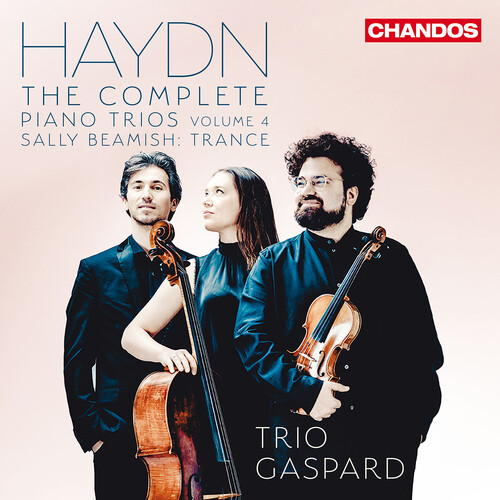Show results for
Deals
- 4K Ultra HD Sale
- Action Sale
- Alternative Rock Sale
- Anime sale
- Award Winners Sale
- Bear Family Sale
- Blu ray Sale
- Blues on Sale
- British Sale
- Classical Music Sale
- Comedy Music Sale
- Comedy Sale
- Country Sale
- Criterion Sale
- Electronic Music sale
- Fantasy Film and TV
- Folk Music Sale
- Hard Rock and Metal Sale
- Horror Sci fi Sale
- Jazz Sale
- Kids and Family Music sale
- Kids and Family Sale
- Metal Sale
- Music Video Sale
- Musicals on Sale
- Mystery Sale
- Naxos Label Sale
- Olive Films on Sale
- Page to Screen Sale
- Paramount Sale
- Pop and Power Pop
- Rap and Hip Hop Sale
- Reggae Sale
- Rock and Pop Sale
- Rock Legends
- Soul Music Sale
- TV Sale
- TV Sale
- Vinyl on Sale
- War Films and Westerns on Sale

Haydn: Piano Trios, Vol. 4
- Format: CD
- Release Date: 4/4/2025

Haydn: Piano Trios, Vol. 4
- Format: CD
- Release Date: 4/4/2025
- Composers: Joseph Haydn, Sally Beamish
- Label: Chandos
- UPC: 095115233023
- Item #: 2710803X
- Genre: Classical Artists
- Release Date: 4/4/2025

Product Notes
Trio Gaspard continues it's acclaimed series of Haydn Trios with this programme of middle and later quartets, designed to be played (and enjoyed) as a standalone programme. As with the previous volumes, the trio include the world premier recording of a piece commissioned to compliment the Haydn's work - in this instance, Trance, by Sally Beamish. The performers note: we should like to highlight just a few examples of the ways in which the inventiveness of his musical materials continues to astound us. The Trio in B flat major for example, opens with a striking combination of opposites: a legato falling scale beginning from what was the highest note on Haydn's piano (F) and a rising arpeggio in short staccato notes climbing up from the bass. After two bars the elements swap places, the staccato arpeggio rising up in the right hand of the piano, while the legato elements continue in the bass. Together, these four bars form a perfectly balanced opening phrase. The character of this beginning feels completely natural and beguilingly elegant, yet it already contains all the main elements out of which Haydn goes on expertly to craft the rest of the movement. In the second movement of this trio, the song-like theme at the beginning is presented with an accompanying bass line. However, Haydn instructs the pianist to play both lines with 'the left hand alone' - a seeming finger-twister which actually lies surprisingly comfortably in the hand. It is an audacious idea and pianistically unique in Haydn's keyboard music.

